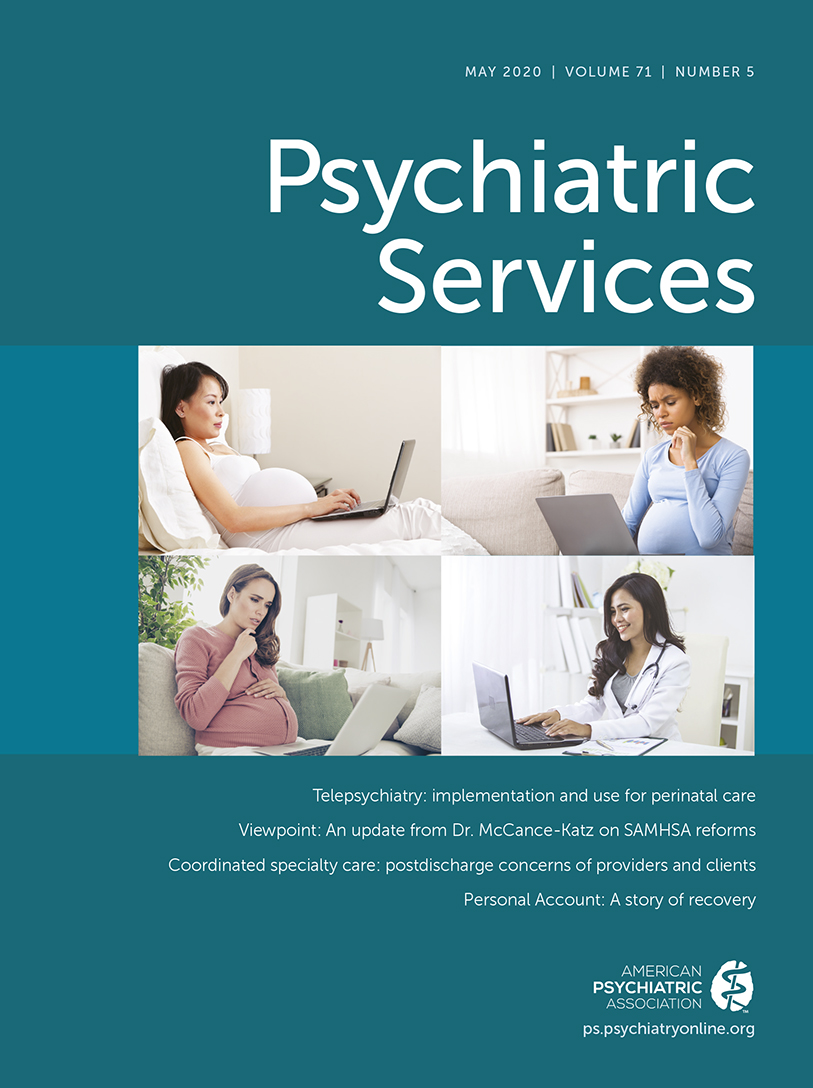Evaluation of Telepsychiatry-Enabled Perinatal Integrated Care
Abstract
Objective:
The purpose of this article is to describe the implementation of the first known telepsychiatry-enabled model of perinatal integrated care and to report initial results following implementation.
Methods:
Behavioral health screening data were collected from 712 patients at an urban women’s clinic, and a more in-depth set of process and outcome measures, including treatment engagement, services utilized, and delivery and postpartum patient outcomes, was collected from 135 patients referred for behavioral health services. Using nationally published metrics to provide context, the authors applied a descriptive design to evaluate and conduct analyses of program outcomes.
Results:
The telehealth-enabled integrated care model was successfully implemented within a specialty obstetrics practice. Identification and treatment of behavioral health issues exceeded nationally published rates. The model was also associated with positive indices related to birth weight and breastfeeding behavior.
Conclusions:
These initial results point to telepsychiatry as an effective tool for expanding perinatal integrated care and lay the foundation for further study and model refinement. The results also add to the growing body of evidence for the use of telepsychiatry-supported integrated care across diverse clinical settings and patient populations.



